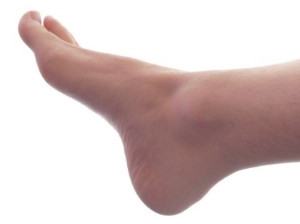 If numbness, tingling and pain are experienced in the feet, you may have a condition called tarsal tunnel syndrome. This occurs when the tibial nerve is squeezed in the tarsal tunnel thereby causing varying sensations in the foot. Causes may include flat feet, arthritis, or a possible ankle sprain. Early symptoms consisting of tingling or numbness in the foot may be present and then vanish, but will become more relentless as the nerve pressure increases. A diagnosis may become necessary and is often arrived at by a physical exam or x-ray. To encourage healing, it’s important to rest the foot as often as possible and to schedule a consultation with a podiatrist for viable treatment options.
If numbness, tingling and pain are experienced in the feet, you may have a condition called tarsal tunnel syndrome. This occurs when the tibial nerve is squeezed in the tarsal tunnel thereby causing varying sensations in the foot. Causes may include flat feet, arthritis, or a possible ankle sprain. Early symptoms consisting of tingling or numbness in the foot may be present and then vanish, but will become more relentless as the nerve pressure increases. A diagnosis may become necessary and is often arrived at by a physical exam or x-ray. To encourage healing, it’s important to rest the foot as often as possible and to schedule a consultation with a podiatrist for viable treatment options.
Tarsal tunnel syndrome can be very uncomfortable to live with. If you are experiencing tarsal tunnel syndrome, contact Shaun J. Limon, DPM and Lisa Griffith-Limon, DPM of Limons Foot & Ankle Care. Our doctors can provide the care you need to keep you pain-free and on your feet.
Tarsal Tunnel Syndrome
Tarsal tunnel syndrome, which can also be called tibial nerve dysfunction, is an uncommon condition of misfiring peripheral nerves in the foot. The tibial nerve is the peripheral nerve in the leg responsible for sensation and movement of the foot and calf muscles. In tarsal tunnel syndrome, the tibial nerve is damaged, causing problems with movement and feeling in the foot of the affected leg.
Common Cause of Tarsal Tunnel Syndrome
- Involves pressure or an injury, direct pressure on the tibial nerve for an extended period of time, sometimes caused by other body structures close by or near the knee.
- Diseases that damage nerves, including diabetes, may cause tarsal tunnel syndrome.
- At times, tarsal tunnel syndrome can appear without an obvious cause in some cases.
The Effects of Tarsal Tunnel Syndrome
- Different sensations, an afflicted person may experience pain, tingling, burning or other unusual sensations in the foot of the affected leg.
- The foot muscles, toes and ankle become weaker, and curling your toes or flexing your foot can become difficult.
- If condition worsens, infections and ulcers may develop on the foot that is experiencing the syndrome.
A physical exam of the leg can help identify the presence of tarsal tunnel syndrome. Medical tests, such as a nerve biopsy, are also used to diagnose the condition. Patients may receive physical therapy and prescriptive medication. In extreme cases, some may require surgery.
If you have any questions please feel free to contact our offices located in Bradenton and Lakewood Ranch, FL . We offer the newest diagnostic and treatment technologies for all your foot and ankle needs.
Read more about Tarsal Tunnel Syndrome